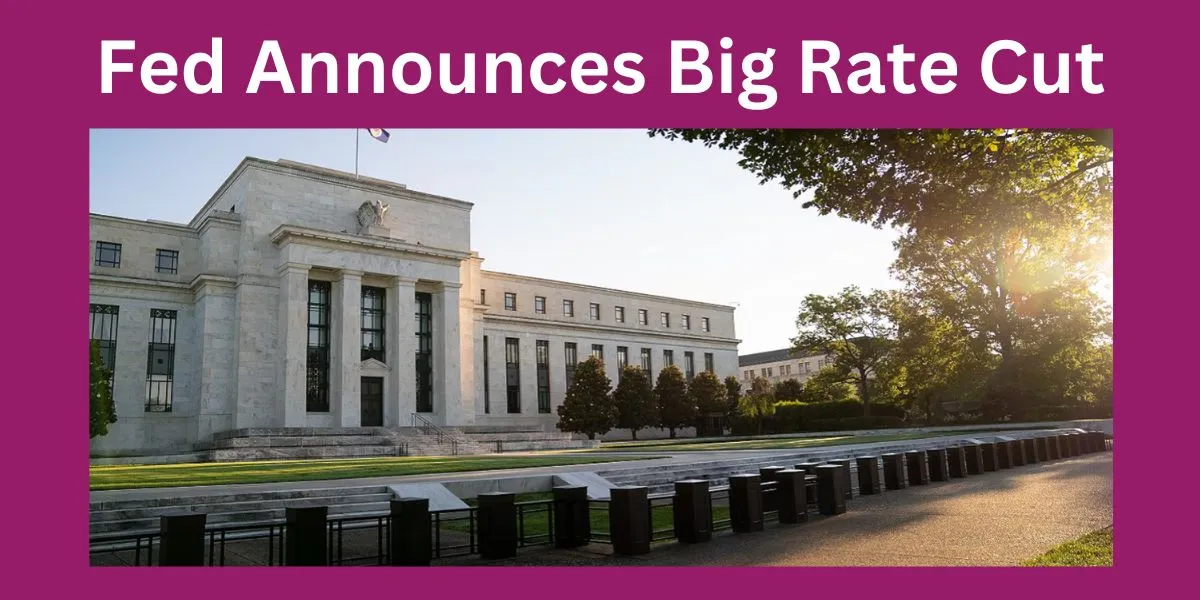The Federal Reserve has just announced a major rate cut, sparking headlines and raising questions about what this decision means for the economy—and your personal finances. Whether you’re a homeowner, a business owner, or someone simply trying to save for the future, a Fed rate cut can affect you in more ways than you might think.
In this article, we’ll break down what a big rate cut means, why the Fed decided to take this action, and how it could impact everything from mortgage rates to credit cards to your savings account. Let’s dive in and make sense of it all!
What is a Fed Rate Cut?
Before we get too deep, let’s clear up what we mean by a “rate cut.” When the Federal Reserve, also known as “the Fed,” announces a rate cut, it means they are lowering the interest rate at which banks lend money to each other overnight. This is called the federal funds rate, and it’s a key tool the Fed uses to control the economy.
A rate cut makes borrowing cheaper and encourages more spending and investment in the economy. But why does the Fed feel the need to do this now? Let’s take a look.
Why Did the Fed Announce a Rate Cut?
The Fed typically cuts rates to stimulate economic activity. When the economy shows signs of slowing down—whether due to weak job growth, low consumer spending, or external factors like international trade issues—the Fed may decide to lower rates to make borrowing cheaper. The hope is that this will spur businesses to invest and consumers to spend more, giving the economy a much-needed boost.
The recent big rate cut suggests the Fed is concerned about slowing growth or potential financial challenges on the horizon. They’ve taken this action to preemptively support the economy before things get worse.
How Does a Rate Cut Work?
When the Fed cuts rates, it essentially makes money cheaper to borrow. Banks can access funds at a lower cost, and this typically trickles down to consumers in the form of lower interest rates on loans, mortgages, and credit cards. While it may not be instant, you could start to see lower interest rates on the financial products you use within weeks or months.
But that’s not the full story. Let’s explore how this cut will impact different areas of your life.
The Impact of a Rate Cut on Mortgages
Lower Mortgage Rates
If you’re in the market for a new home or thinking of refinancing your current mortgage, this rate cut could be great news. When the Fed cuts rates, it usually leads to lower mortgage rates. This means you could get a cheaper loan and pay less interest over the life of your mortgage, potentially saving you thousands of dollars.
Should You Refinance?
If you already have a mortgage, a rate cut might make refinancing more attractive. Refinancing to a lower rate could reduce your monthly payments and save you money over time. However, before jumping in, make sure the savings from a lower interest rate outweigh the costs of refinancing, such as fees and closing costs.
Credit Cards: How Will They Be Affected?
Lower Interest on Credit Card Debt
Do you carry a balance on your credit card? The Fed’s rate cut could lower the interest rate on your variable-rate credit card, making it slightly cheaper to pay down your debt. Credit card rates are often tied to the prime rate, which is influenced by the federal funds rate. While you might not see an immediate change, your credit card interest rate could drop over the next few billing cycles.
Beware of Higher Spending
While lower rates can make debt cheaper, it’s important not to let it encourage overspending. It might be tempting to spend more on credit cards when rates go down, but remember, you’ll still have to pay off that debt eventually.
How Will This Affect Savings Accounts?
Lower Interest on Savings
Unfortunately, a rate cut doesn’t just mean lower borrowing costs—it also means lower returns on savings. If you have a savings account, you may see the interest rate drop in response to the Fed’s decision. This is because banks will offer lower rates on deposits as their own borrowing costs decrease.
While this might be frustrating for savers, it’s worth remembering that other investments, like the stock market, could benefit from the rate cut. We’ll get into that next.
Stock Market Reactions
A Boost for Stocks
Historically, rate cuts have often given a boost to the stock market. Lower borrowing costs make it easier for companies to invest and expand, which can lead to higher profits and, in turn, higher stock prices. Additionally, lower interest rates tend to make stocks more attractive compared to bonds and other fixed-income investments, which offer lower returns during times of low interest rates.
Risks to Keep in Mind
That said, the stock market can be unpredictable. While a rate cut can encourage market growth, it can also signal that the Fed is worried about the economy. If investors think the rate cut isn’t enough to counteract larger economic issues, they might start selling off stocks, leading to a market decline.
How Will This Impact Small Businesses?
Cheaper Loans
For small business owners, a rate cut can provide an opportunity to secure cheaper loans to grow their business. Whether you’re looking to expand your operations, buy new equipment, or hire more employees, lower interest rates mean you can borrow money at a lower cost.
Encouraging Investment
Not only does a rate cut make it easier for small businesses to borrow, but it also encourages investment. Investors may seek out small businesses offering higher returns than they could get from traditional savings accounts or bonds during a low-interest-rate environment.
Inflation and Its Role
Keeping an Eye on Inflation
One of the main reasons the Fed is cautious about cutting rates too much is the potential for inflation. When borrowing is cheap and there’s more money in the economy, prices can start to rise. Inflation can erode purchasing power and hurt consumers if it gets out of control. The Fed will need to balance encouraging economic growth with keeping inflation in check.
How Long Will Low Rates Last?
The Fed’s Long-Term Strategy
While this rate cut is big news, the real question is: how long will it last? The Fed’s decisions on interest rates depend on how the economy performs. If things start to improve, the Fed could eventually raise rates again to prevent inflation. On the other hand, if economic challenges persist, we could see rates stay low for a longer period.
Conclusion
The Fed’s big rate cut is a significant move aimed at stimulating the economy during uncertain times. For consumers, this decision could mean lower mortgage rates, cheaper loans, and more affordable credit card debt. However, it also means lower returns on savings and potential risks for inflation. Understanding how a rate cut affects different areas of your financial life can help you make informed decisions about borrowing, saving, and investing.
Ultimately, the Fed’s decision is just one part of a larger economic picture. Keep an eye on how things evolve and consider how these changes might impact your financial plans.
FAQs
1. How soon will I see changes in interest rates after a Fed rate cut?
Changes in interest rates can take a few weeks to months to show up in things like mortgages, credit cards, and savings accounts. It’s not usually an immediate shift but will happen over time.
2. Will a Fed rate cut affect fixed-rate mortgages?
No, a rate cut primarily affects variable-rate products. If you have a fixed-rate mortgage, your rate will remain the same, but you could still consider refinancing to take advantage of lower rates.
3. Is this the right time to refinance my mortgage?
It could be! If you can secure a lower interest rate that outweighs the costs of refinancing, it might be a good time to reduce your mortgage payments. Make sure to do the math before committing.
4. What does a Fed rate cut mean for the economy?
A rate cut is typically used to stimulate the economy by making borrowing cheaper, which encourages spending and investment. However, it can also signal concerns about economic growth.
5. Will this rate cut lower my student loan payments?
It depends. If you have a variable-rate student loan, you could see a decrease in your interest rate. However, if your loan is fixed-rate, your payments will remain the same.










